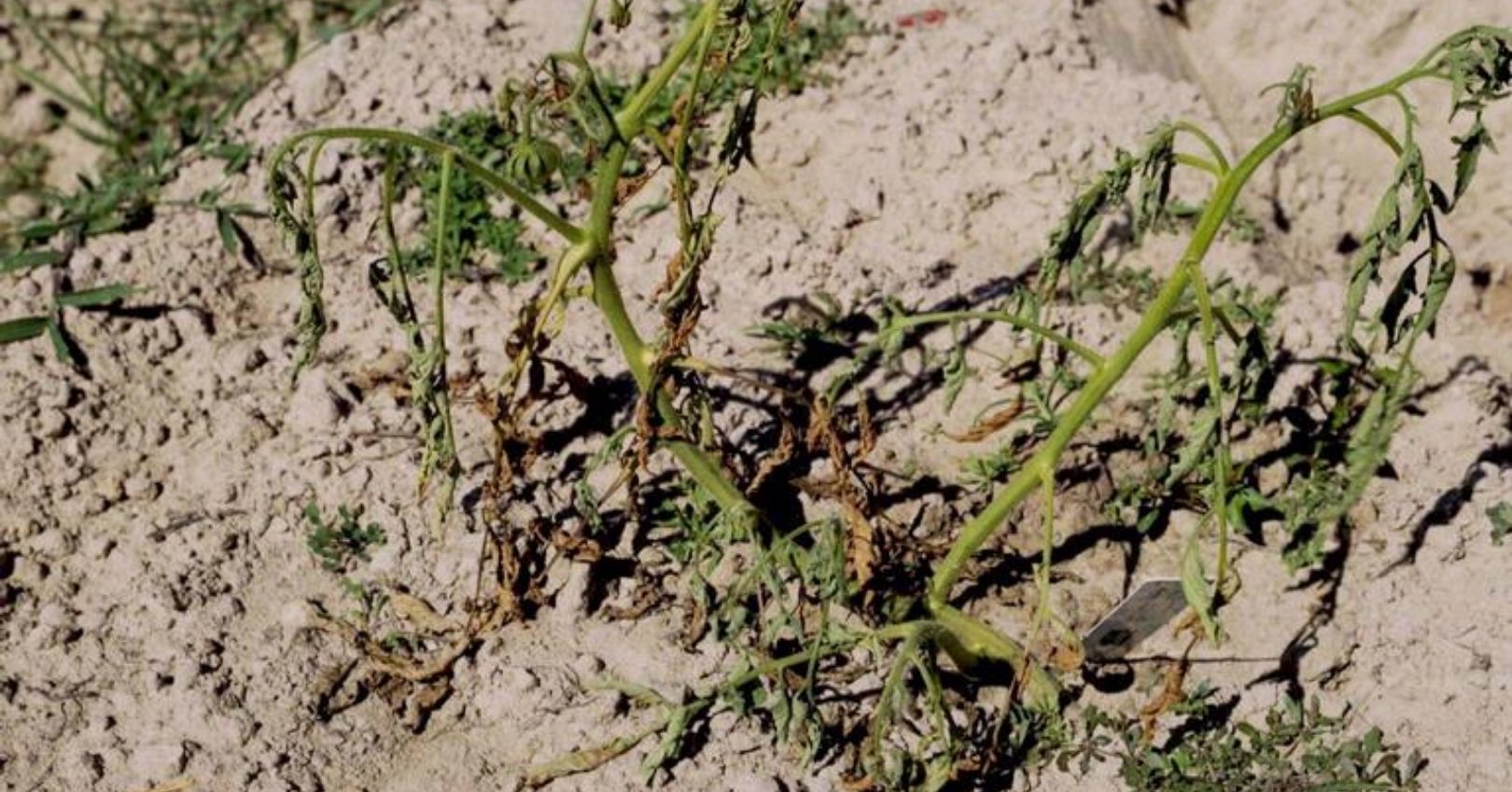Fusarium Root Rot

Casual Agent
Fusarium root rot, caused by the fungus Fusarium solani, can infects the roots of peppers, eggplants, tomatoes, and cucurbits. F. solani has what are called “formae speciales,” (f. sp.) meaning that these types are very host-specific . For example, F. solani f.sp. eumartii infects pepper, tomato, eggplant, and potato, but does not infect cucurbits. We currently have not identified the forma speciales that occur in Utah.
Symptoms
Infected roots will have reddish-brown lesions along the cortex of the main lateral roots. Vascular discoloration also occurs a few inches above and below these lesions. Foliar symptoms include interveinal chlorosis and necrosis, typically on a single branch. As the disease advances in the roots, the leaves of the entire plant will eventually turn brown and collapse.
Disease Cycle
F. solani can survive in the soil for 2-3 years without a host. The pathogen infects plants through root wounds and is most severe in temperatures ranging from 77°- 86°F.
Management
There are currently no plant varieties fully resistant to Fusarium foot root.
- Crop Rotation. Rotate to non-host crops for at least 2 years to reduce inoculum build-up in the soil.
- Sanitation. Prevent the spread of pathogens between the field by thoroughly cleaning mechanical equipment and other tools.
- Soil sterilant. Soil fumigation or solarization treatment may be effective in fields where crop rotation is not an option.

